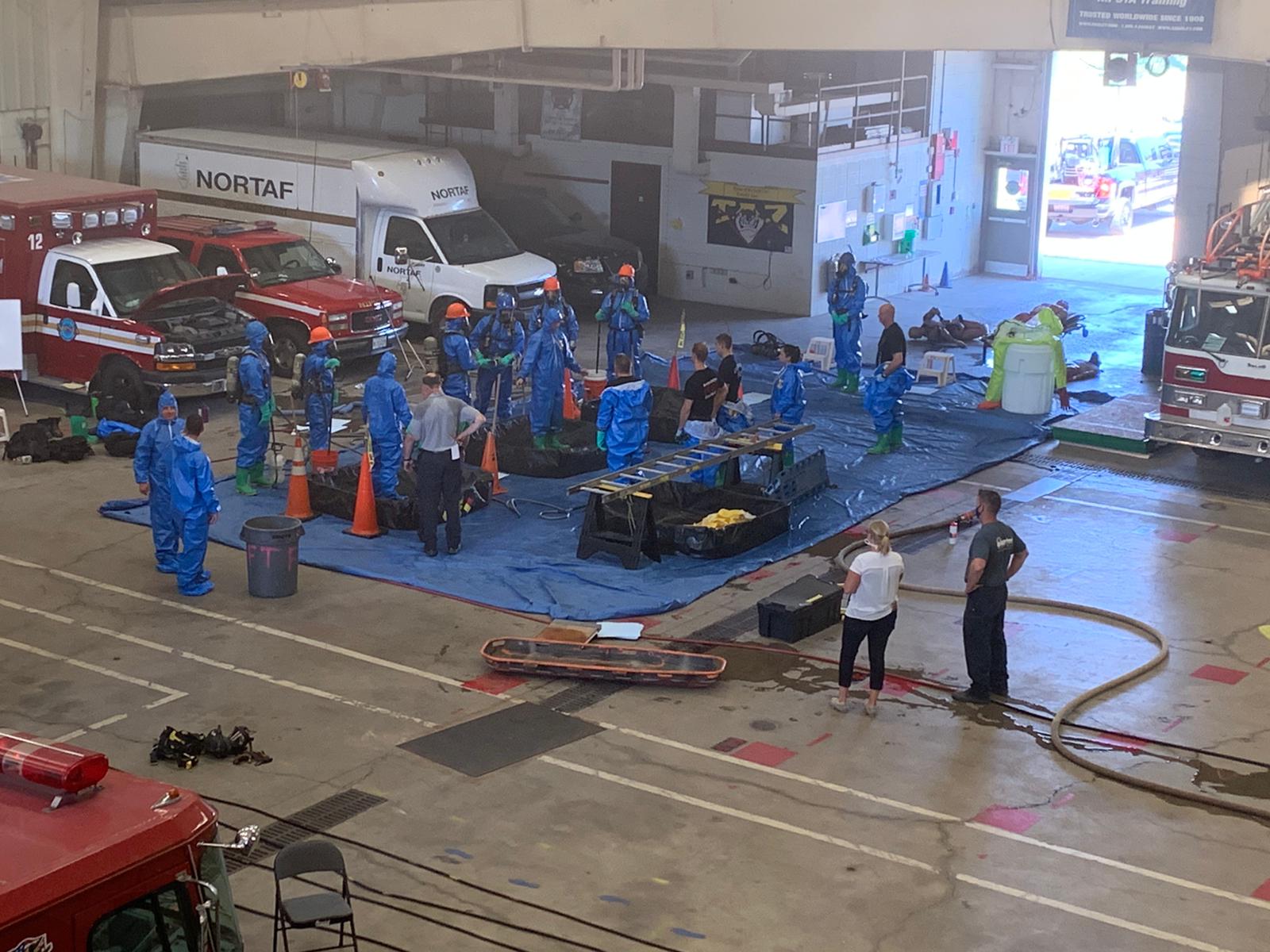Safety is of the utmost importance when working in a confined space environment. Both the organization deploying the confined space workers, and the workers themselves need to ensure proper precautions are taken prior to entering a confined space. To support confined space safety, we’ve put together this blog post highlighting the precautions to take before entering, during a job, and in the event of a confined space emergency.
Common Confined Space Hazards
Some of the most common, and visible, hazards that may occur in a confined space scenario include fall potential, low lighting and wet surfaces. Configuration of a confined space may lend itself to potential hazards including machinery, live electrical and other forms of stored energy. That said, the most significant potential hazard in a confined space scenario is poor air quality. Atmospheric hazards (poor air quality) is responsible for 82% of confined space fatalities and 89% of confined space emergencies.
Confined Space Safety Precautions
One of the most crucial safety steps is the completion of a confined space entry permit. A confined space entry permit is essentially a safety checklist that organizations are mandated to complete, by OSHA, for permit required confined spaces.
In addition, ensuring that lockout/tagout is performed and air quality is monitored are critical precautions. Confined spaces must be thoroughly monitored prior to entry for air quality, and should be continuously monitored while employees are working in the confined space.
Ventilation equipment, and air systems must be available on-site and be readily available in the event of a change in atmospheric conditions, or if a rescue needs to be performed in an Immediately Dangerous to Life and Health (IDLH) environment.
Workers entering a confined space should always remain on a tagline unless it creates a “severe entanglement hazard”. Workers should also be aware of the possibility that they may need fall protection around the entrance to a confined space, and potentially inside as well. In addition, workers should learn, and understand, the signs and symptoms associated with exposure to low oxygen, carbon monoxide and other toxic gases, which could be in the confined space environment you are operating in. Be ready to sound the alarm in conditions change.
Confined space scenarios should also be staffed with an on-site confined space rescue team. The reason we recommend an on-site team is because NFPA 350 recommends that a rescue team be capable of making entry for a rescue within two minutes of the incident occurrence. Only an on-site team can handle this type of quick response. In addition, these rescuers are required by OSHA to be trained to perform confined space rescues, and should have the proper equipment to perform these types of rescues.
Confined Space Safety Equipment
Specific confined space safety equipment exists because it is designed to either support the confined space entry, or to help facilitate a rescue. Equipment needs may include winches, mechanical advantage retrieval systems, tripods, patient packaging equipment, rigging hardware, emergency medical equipment, supplied air and/or self-contained breathing apparatus, four gas meters and potentially more advanced air monitoring equipment to look for specific dangerous gases like Benzene, among others.
Confined Space Emergency Plan
An emergency in a confined space scenario must be acted upon quickly. This is why it is necessary to have a trained team, on-site and available to perform rescues within a confined space. This team must also have the proper equipment to make those rescues. Rescues must be performed quickly, and that means the team should be set-up and ready at the entry point to make a rescue. If a true emergency takes place, the confined space rescue team must be able to act quickly, and decisively to save lives. The legal requirements for a rescue team can be found in OSHA 1926.1211.
For information on Elevated Safety’s confined space consultation, training and on-site rescue services, check out our confined space services page on our website.
